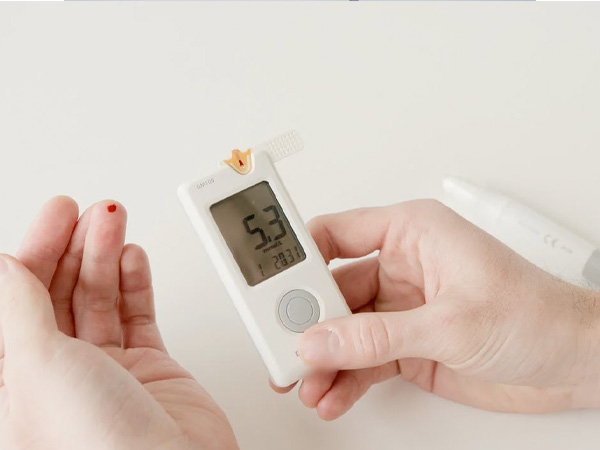
Cycling And Diabetes
Diabetes is a major concern worldwide; lifestyle modifications such as physical activities and diet are the primary treatment methods for people who are diagnosed with diabetes, especially type 2 diabetes.
Cycling is an effective physical activity and a great form of aerobic exercise that may help reduce the risk of diabetes. The rising incidence of diabetes in young adults (below 40 years) is giving way for the adoption of such physical exercises, especially by people who have a family history of diabetes.
According to a study, cycling can help improve glycosylated haemoglobin levels (HbA1c), body weight and blood pressure in adults over 18 years and below 40 years with type 2 diabetes, when carried out for over six months. In people without diabetes, cycling can help reduce the risk of the condition and related risk factors like stroke. [2]
Another study has shown that physical activities and exercises can not only prevent or delay the development of diabetes in high-risk patients, but can also reverse diabetes in some. [3]
Diabetics Must Include Jamun In Their Diet: Here’s Why

Cycling For Diabetic Foot Complications
Diabetes is a chronic condition which is related to severe long-term complications like adiabetic foot. Proper management of diabetes can help improve diabetes care, however, if the sugar levels are well-controlled in diabetes, it may lead to diabetic foot. Though the condition is a common diabetes complication, it can cause osteomyelitis of the foot and amputation (surgically cutting) of limbs. [4]
A study has shown that cycling can help increase the blood supply to the lower extremities. With a specialised shoe that can minimise forefoot stress, cycling can prevent the risk of the diabetic foot as well as promote healing of wounds in patients already with the condition. [5]
Also, cycling can act as thermotherapy, or say, it can induce dry heat to local areas like the foot and may heal chronic diabetic foot ulcers, especially if paired with electrical stimulation. [6]
What Are Steroids And Why Are They Given To COVID-19 Patients?

How Does Cycling Help Reduce Diabetes Risk?
Cycling, being a form of physical activity, can improve the capacity of the cells to absorb glucose, thus increasing the binding capacity of insulin to the receptor cells, so that the cells can utilise glucose effectively and reduce sugar levels.
To understand this, first, let us understand some basics about diabetes. Insulin resistance causes the development of diabetes, a condition in which body cells do not respond well to insulin and are unable to utilise glucose for energy.
READ RELATED: Girl hooked on meth by age 15 shares battle to stay off drugs
The body’s insufficiency to utilise glucose causes excessive deposits of fats in the muscle fibres. When there is low energy, the muscle fibre sends information to utilise glucose and provide energy to them.
Best Exercises For People With Diabetes
However, the deposition of fats in the muscles sends a message that energy is already present and thus, the glucose utilisation is paused for a while.
Initially, this does not harm the body, but in the long run, the pancreas decreases the production of insulin. Cycling helps burn the fat deposits in the muscles and help them send a signal for glucose utilisation, thus lowering low sugar levels in the body.
A 30 to 60 minutes of cycling a day is beneficial enough to provide anti-diabetic benefits. Also, cycling for an hour at a moderate pace by overweight individuals with diabetes can help reduce halves of their blood sugar levels in 24 hours. [7]
Pregnancy Gingivitis: Causes, Symptoms, Complications, Treatments And Other Details

Tips Related To Cycling For Diabetics
- Start with moderate pace: If you are a diabetic and planning to start cycling, start it with a moderate pace and never push yourself to continue it for longer hours. This is because vigorous exercises can actually raise glucose levels instead of lowering them. [8]
- Carry a glucose drink: The glucose levels sometimes may fall too low while cycling and you may need a glucose drink to bring it back to normal. Therefore, carry glucose or low-calorie energy drink always with you.
- Choose the right shoe for cycling: Some shoes can increase the risk of diabetic foot by increasing the pressure in the area. Choose shoes that can manage the pressure of the foot and avoid any kind of nerve damage. [5]
- Take a break between cycling: As aforementioned, continuous exercise can adversely affect the glucose levels and surge them instead of lowering them. Therefore, it is important to take a break of 10-15 minutes between the ride.
- Hydrate: Hydration is very important while exercising, especially for diabetics as they tend to lose water more due to excessive sweating. Also, dehydration can surge glucose levels. Therefore, it is suggested to hydrate your body well during the course of exercise. [9]
- Keep it clean: Sweating during cycling can lead to irritation of the skin or bacterial infections. Therefore, wear clothes that can allow the sweat to evaporate rather than absorbing it. Also, pay attention to cuts or abrasion during cycling as they can lead to painful sores.
COVID-19: Can Breath Holding Exercise Make Lungs Healthier?
To Conclude
Cycling is a form of physical activity that can effectively help prevent or manage diabetes in people of all age groups. However, cycling alone cannot manage diabetes and must be accompanied by a balanced diet and other lifestyle changes such as quitting smoking.
Common FAQs
1. Does cycling reduce blood sugar?
Moderate physical activities like cycling are considered beneficial to reducing blood sugar levels. However, if cycling is followed by a well-balanced diet, the management of diabetes will be easier.
2. Is cycling good for diabetes 2?
Yes, studies say that an hour of cycling at a moderate pace is good for people with type 2 diabetes.
3. What is the best exercise for diabetics?
Moderate physical activities like cycling and walking are considered the best form of exercise for diabetics. Other exercises like swimming, aerobic dancing and weightlifting are also the best ways to manage or prevent diabetes.
Source:










